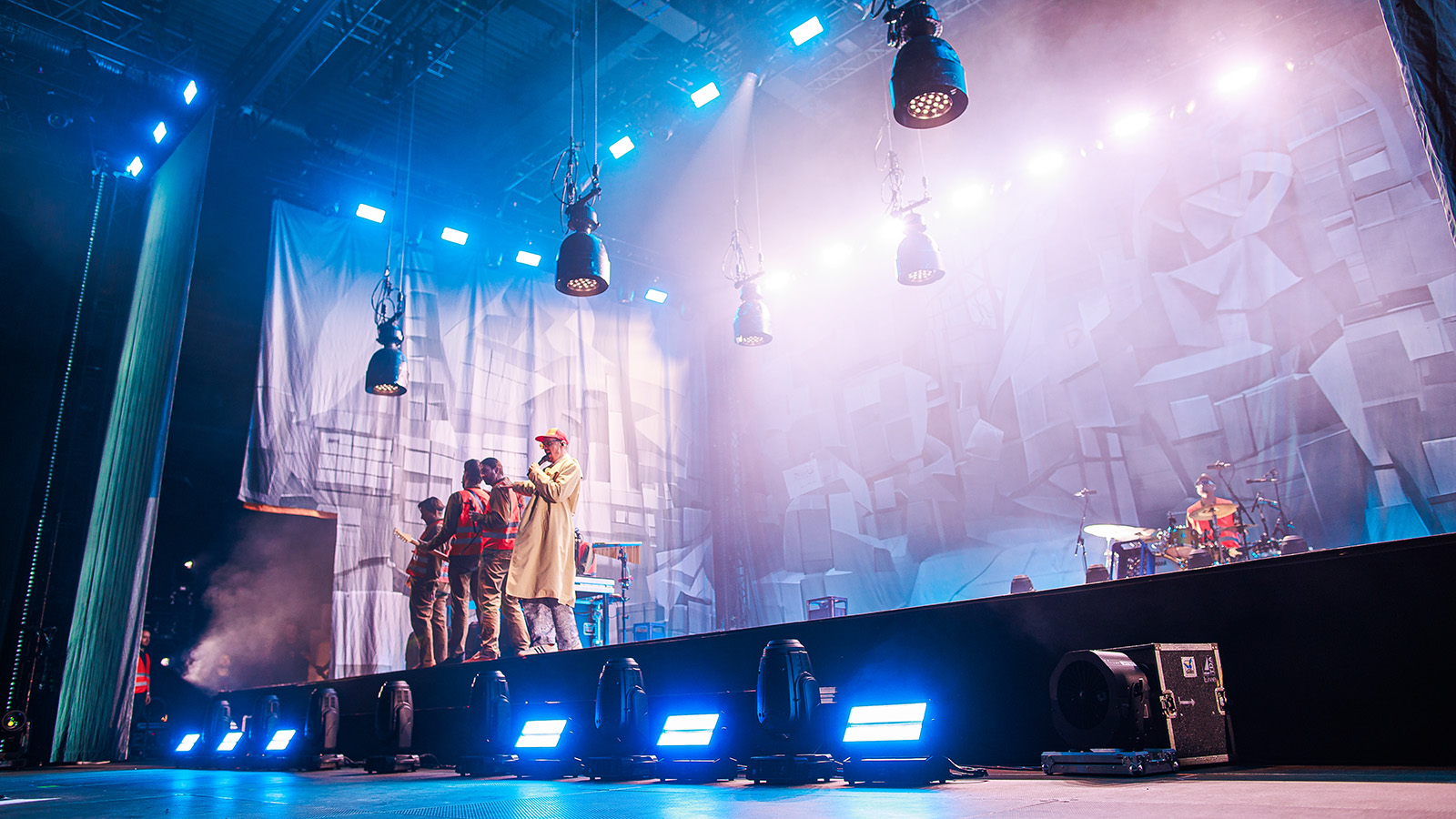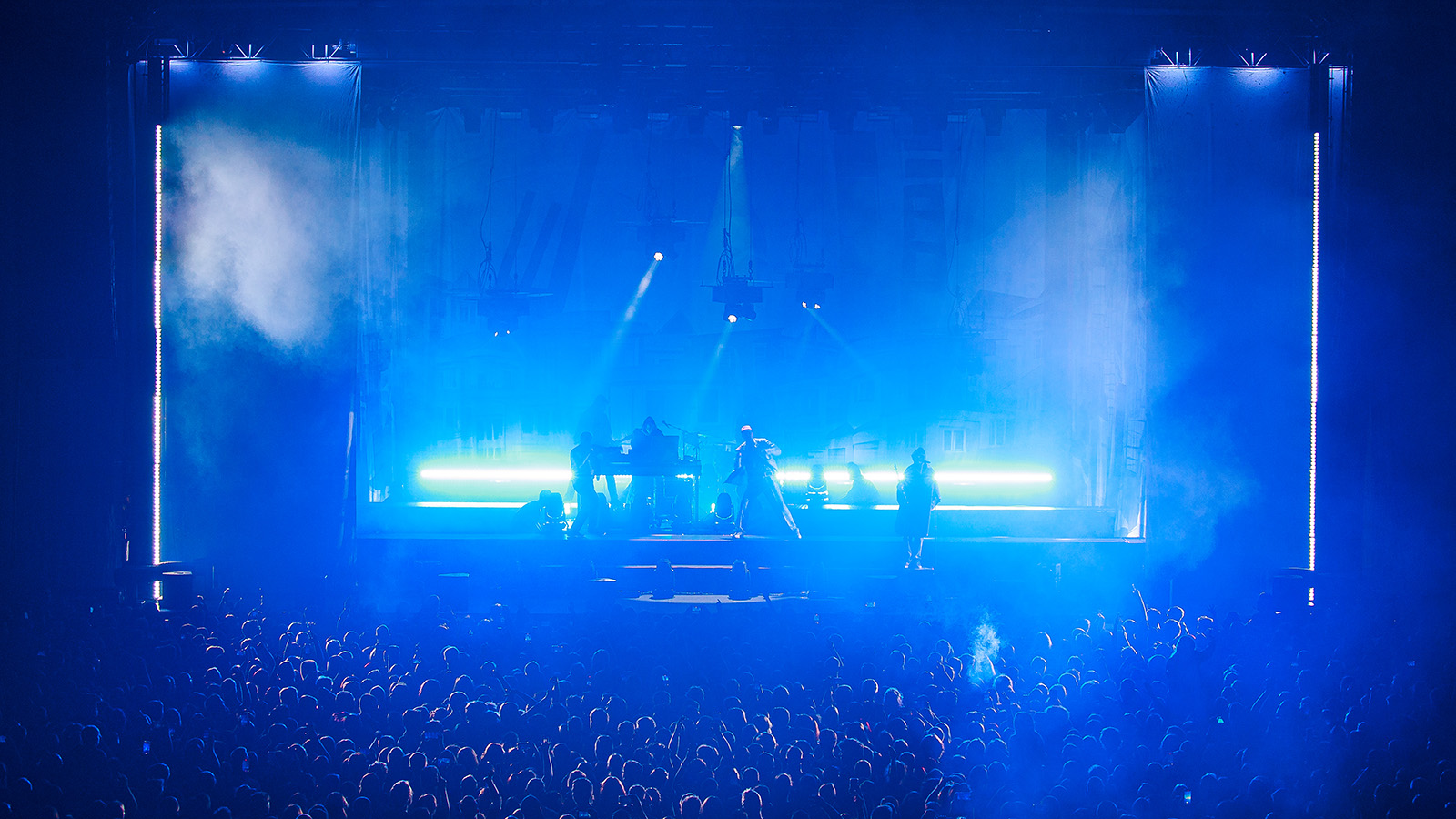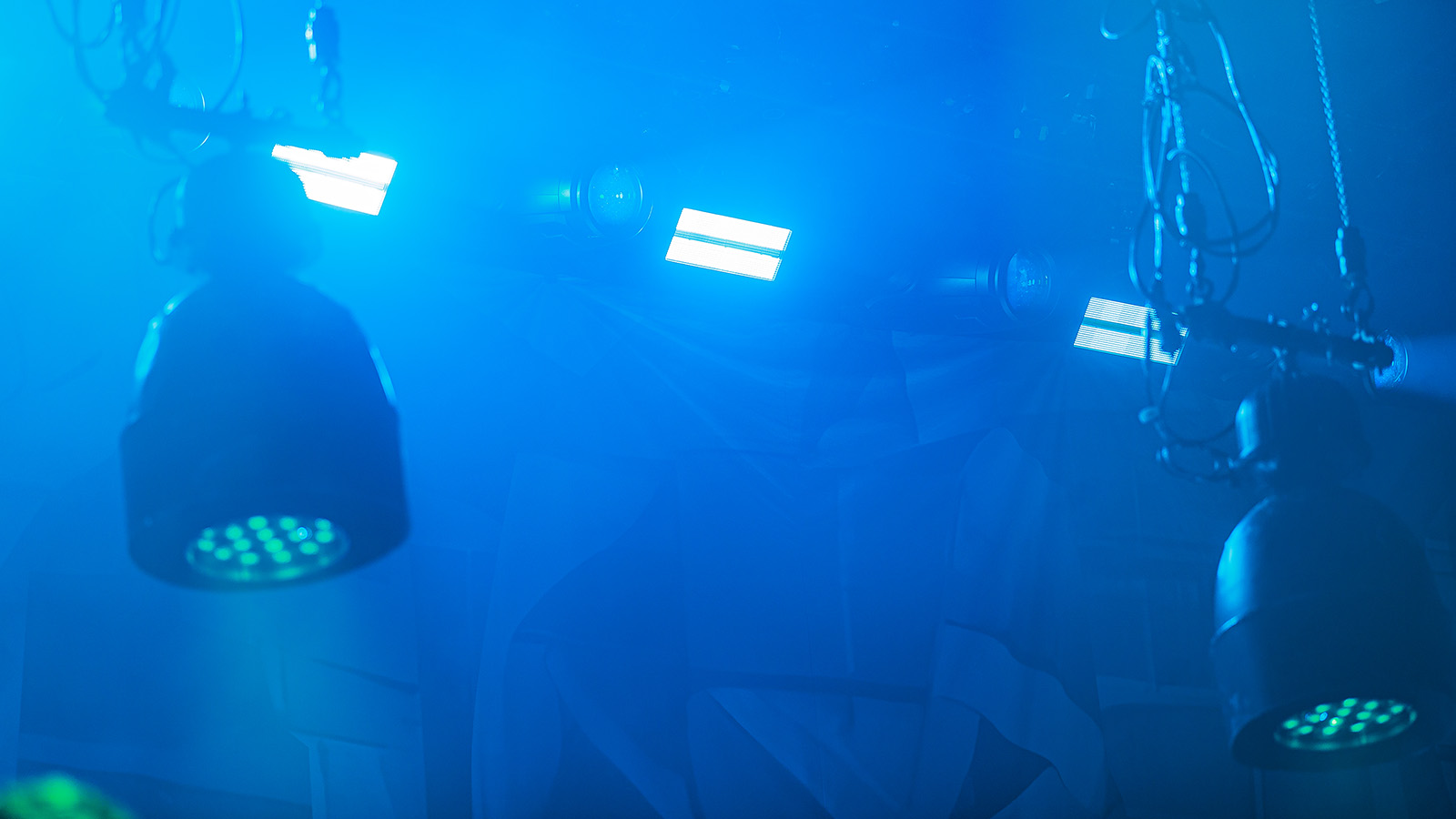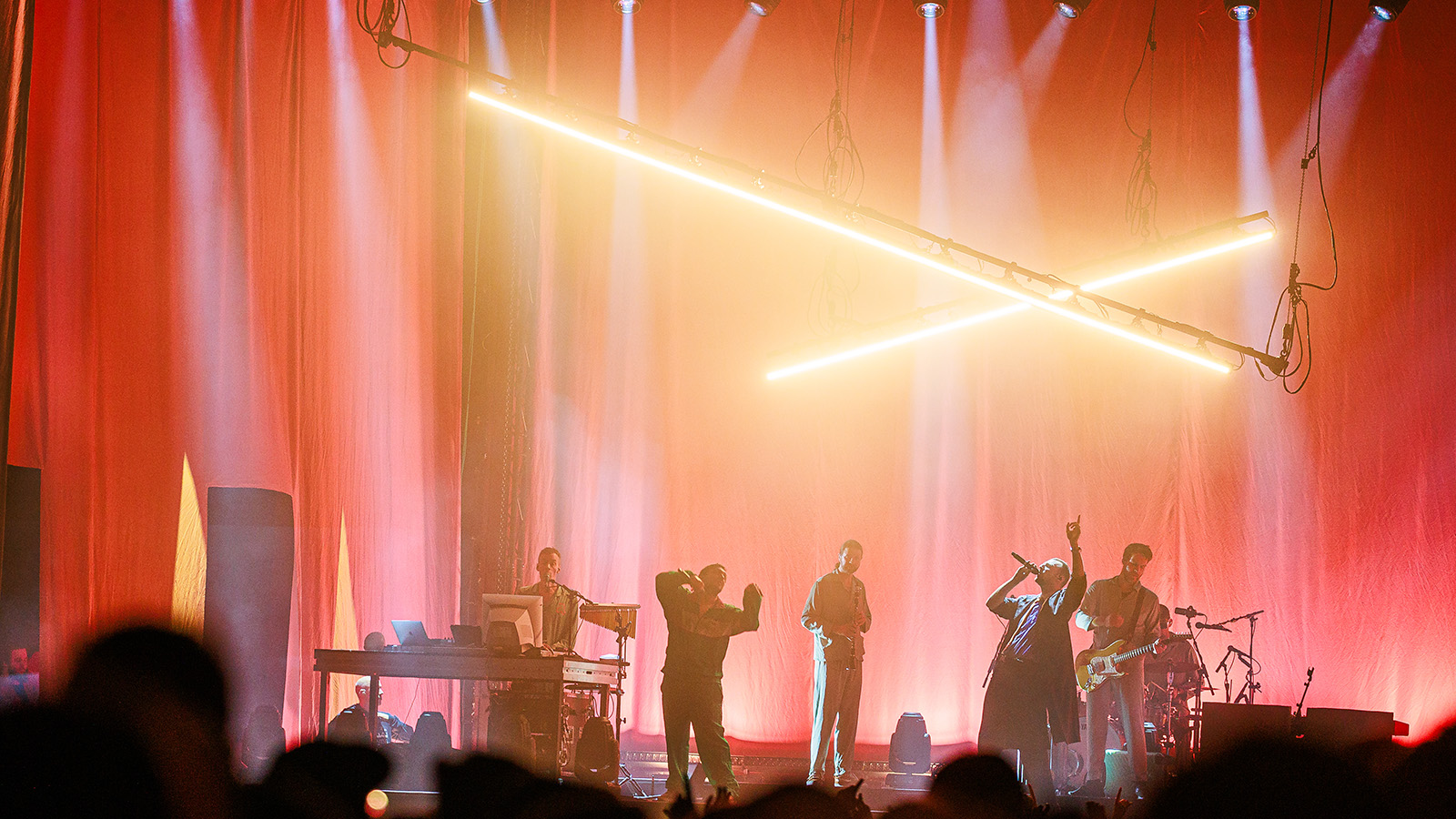Christoph Schneider creates a dystopian scenery in three acts for the German rap phenomenon
The artist Alligatoah is not easy to pin down. He nonchalantly marries rap with catchy pop melodies, slips into ever-changing personae and has been delighting large audiences for years with his unique overall package. The theatricality certainly suits him, and in Autumn 2023, this phenomenon of German rap will continue with the latest leg of his ‘Retour’, which will introduce tracks from the current album ‘Rotz & Wasser’.
Christoph Schneider is responsible for the lighting design on this tour, which is promoted by ibb Booking GmbH and Boldt Berlin GmbH. He specified 46 GLP JDC1, 10 JDC Line 1000 and five impression X5 Wash to fulfil the artist’s vision.“Alligatoah is a very creative person who is heavily involved in the show design,” states Christoph. “He designed most of the set himself, as well as the intro and choreography for individual songs. To complement this, I created the lighting design and programmed the show, further developing Alligatoah’s ideas and bringing the concept to life. This influenced, for example, the positions of the risers in the individual songs and the question of when everything stands still or when (and how much) it moves.” The artist himself made the prop selection for the individual songs.
Show in three acts
In keeping with the musician’s passion for skillful theatrics, the show is divided into three acts: Act 1 takes place in a parcel sorting office, Act 2 takes place outdoors, where the packages are delivered (including using illuminated drones), and Act 3 is set in a monochrome orange world, that initially doesn't bode well.The show is generally lit in a reductive manner, and often only from one direction. The classic lighting of the treadmills is provided by alley towers. The lighting design itself is predominantly monochromatic until it emerges in a colourful finale.Christoph explains: “My designs are always about contrasts and the greatest possible dynamism … very small looks versus very large ones, monochrome versus shimmering colour explosions. The goal is to tell a story and take the audience on a journey.”
Show design
‘Retour’, the title of the tour, defines the style of the design. The stage depicts the supposed heart of modern society: a parcel warehouse. Two 14-metre-long conveyor belts send packages, musicians and props back and forth, with the lighting on the belts varying fundamentally throughout the three acts. While in the first act the impression X5— hidden inside old industrial lamps—sets the lighting mood, package drones with beamlights are used in the second act. The third type is characterised by two light lines made of GLP JDC1, which float above the conveyor belts as variable light objects. In addition, two movable risers for DJ and drums ensure constantly changing light images. The trapezoidal dystopian stage set is closed off at the front by a roller shutter. The look of the entire show in this instance is rather dark and disturbing.
Stage architecture with JDC1
Using the GLP JDC1—one of Christoph’s favourite tools—the designer traces the trapezoidal shape of the stage. A second trapezoidal truss that tapers towards the front deliberately reverses this shape. Together with compact beam lamps, JDC1 also forms the floor set and creates a minimalist-looking architectural space, especially in the third act.“
JDC1s basically have a permanent place in my designs because they are so incredibly versatile,” states the designer. “I regularly use them to replace classic wash lights, strobes and floodlights. I also like to use them very graphically. The amount and density of hybrid devices in the rig allows me to stage them almost like a coarse-pixel LED wall.”
Christoph chose the impression X5 because of its baseless design; thanks to this, it fits into the limited space of the industrial lamps selcted. “I wanted to make the moving lights completely disappear in the lamps, but still allow for some movement. Therefore, I chose an appropriate compact device.”
For the third act, which culminates in a gigantic rainbow after all the predominantly monochrome and reduced-lit looks, Christoph designed a clear architectural space with LED bars and a central light object made of JDC Line 1000, which looks like a light art installation in a museum.
The lighting object consists of two lines of light, which primarily shape the dynamics in the third act. For the last song ‘Willst du’ they repeat this, changing the entire light space again.
Through strobe effects and—sometimes faster, sometimes slower—chasers, they emphasise rhythm and tempo … from the gently flowing to the lightning fast and blindingly bright, while the JDC1s mainly illuminate the curtains in this final act.
In addition to the lighting design, Christoph Schneider programmed the show purely in timecode, with only a few ‘live’ cues (e. g. Blinder, Followspot, Fog machine). Adrian Schmidt operated the first tour segment in February of this year, while Thomas Stranzl took over the festival shows and the Autumn tour.





